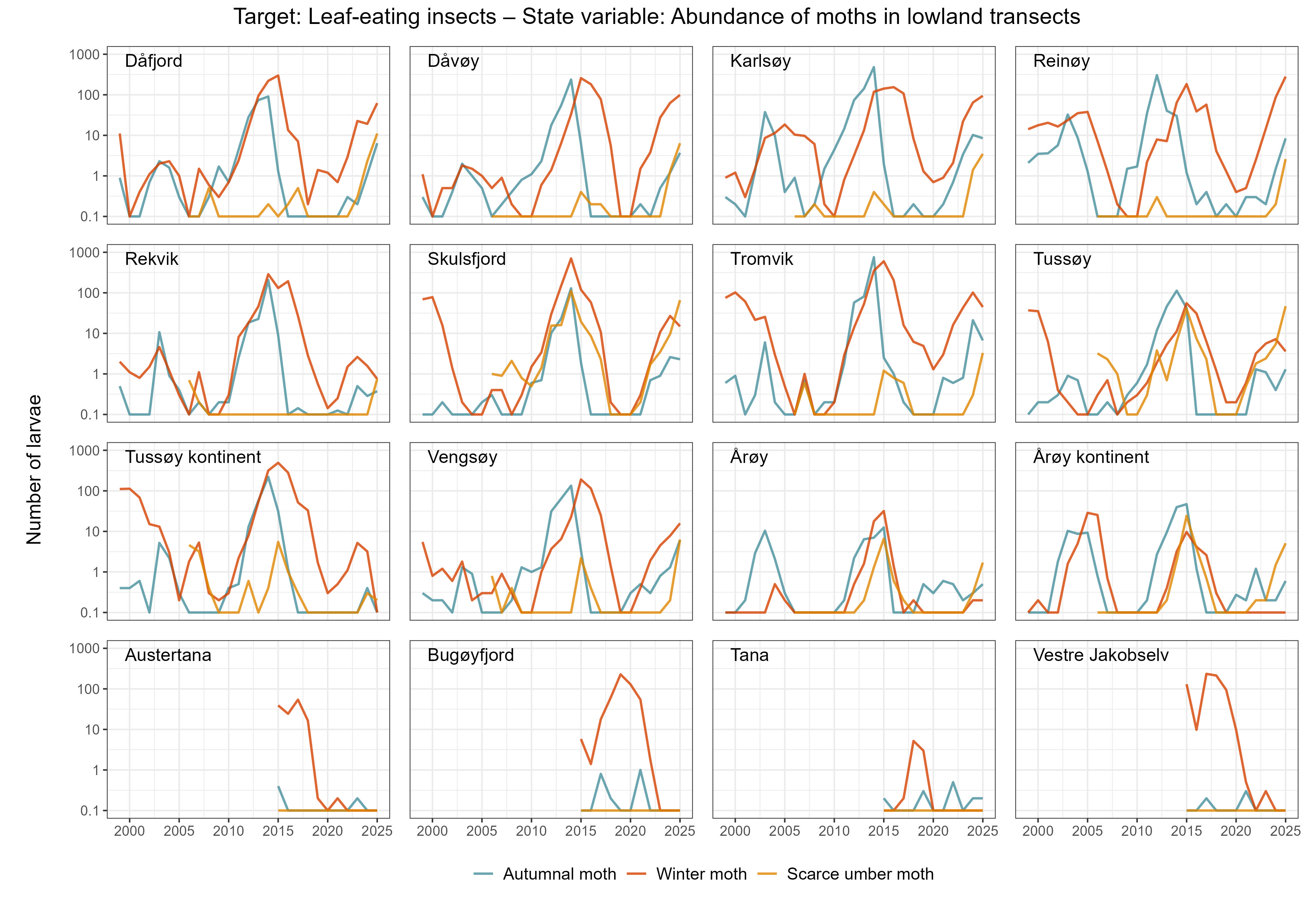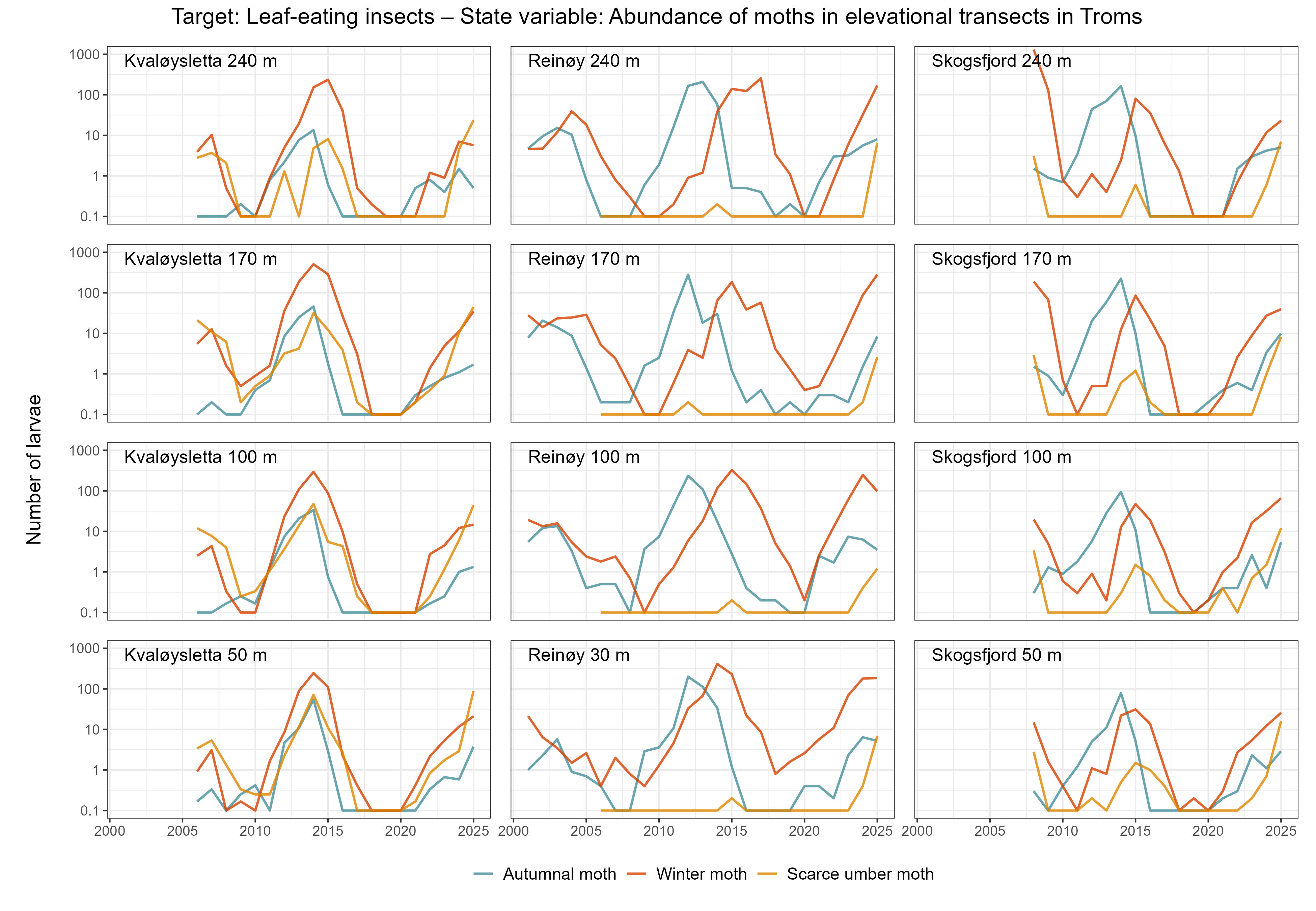The boundary between arctic tundra and subarctic forest is the largest vegetation transition (ecotone) on the planet, stretching more than 13.000 km around the northern hemisphere. A warmer climate is expected to cause both an expansion of shrubs and trees into tundra areas, and intensified droughts and forest pest outbreaks, making it challenging to predict the future of the ecotone.
Tundra-forest ecotone dynamics in a changing climate
Higher temperatures are beneficial for the growth of trees and tall shrubs, and dynamic climate-vegetation models predict that the northern distribution limits of woody vegetation types will change dramatically in the near future. Encroachment of shrubs and trees into tundra areas will alter the surface reflectance and hence have implications for climate feedbacks. Encroachment will further facilitate range expansions of boreal species such as the red fox into tundra areas, resulting in increased pressure on the critically endangered arctic fox. Forest pest insects like defoliating geometrid moths can also be expected to expand northwards in a milder climate, and this can result in intensified outbreaks and increased forest mortality.
In Varanger, moth outbreaks have resulted in historically unprecedented levels of forest mortality during the last 15-20 years, partly because a southern moth species – the winter moth – has established itself in the region. Poor regeneration of the forest in many areas after these outbreaks gives reason to believe that the resilience of the birch forest has been exceeded. Winter moth outbreaks have recently also caused substantial mortality of willows in shrub tundra close to the coast on the Varanger peninsula. The regeneration of the forest after outbreaks is also strongly dependent on the browsing pressure from mammalian herbivores. It is therefore necessary to monitor biotic drivers of ecotone dynamics, in the form of both ungulates and moths, in order to understand both indirect and direct effects of climate change on the tundra-forest ecotone.

Abundance of moth larvae in lowland transects in Troms (top three rows) and East Finnmark (bottom row). Lines show mean abundance (number of larvae per station). Moth outbreaks occur approximately every decade. In Troms moth monitoring has been in place since 1999. In East Finnmark it was initiated in 2015. Further information about sampling design and datasets.

Abundance of moth larvae in elevational transects in Troms. Lines show mean abundance (number of larvae per station). Moth outbreaks occur approximately every decade. In Troms moth monitoring has been in place since 1999. Further information about sampling design and datasets.
Expected climate impact
Climate change is expected to lead to warmer and longer growing seasons in the Arctic and thereby improved growing conditions for many woody plant species. The expected result is tree line advance and shrub encroachment into tundra areas. Such encroachment will be modified ungulates and rodents, but even more so by insect outbreaks. Warmer springs and milder winters will be beneficial for the growth and survival of insect pests, and climatically intensified insect outbreaks are already causing widespread vegetation changes and forest mortality in the subarctic birch forest of Fennoscandia all the way to the low arctic tree line in Varanger.

Schematic representation of expected direct and indirect effects of climate change on the tundra-forest ecotone in Varanger. The direct effect of climate promoting woody vegetation growth and encroachment, and the indirect effect acting via intensified defoliator outbreaks and forest mortality, are expected to be the two strongest pathways. Note that there is a strong difference in the rate of change implied by these two pathways. While insect outbreaks may cause widespread forest death in the course of a few years, temperature-mediated encroachment of shrubs and trees into tundra areas is a slow process acting on a scale of decades.
Management relevance
- Ungulate (reindeer, moose, sheep) grazing and browsing can counteract the climate driven encroachment of trees and shrubs into tundra regions. At the same time, it can prevent the natural regeneration of forests after insect outbreaks. Information on the effects of ungulate grazing on woody vegetation growth and tree recruitment under a range of circumstances is needed for management of both forest resources and ungulate densities.
- Salvage logging of forests may be an effective management tool for stimulating new growth in forest after insect outbreaks, but the benefits of logging may be highly variable depending on local conditions. Documenting the effects of salvage logging in natural birch forests subject to moth outbreaks will hence permit forest managers to make more efficient use of salvage logging as a management tool in the future.
- Close cooperation between the module leadership and the forest management authorities in Finnmark (the county governor the director of forestry and the Finnmark estate) ensures that the research conducted in the module addresses management relevant questions and that research efforts can be adapted to meet changes in management needs over time.
Monitoring methods
Moth outbreaks: Annual field estimates of moth larval abundances at four lowland localities in Varanger since 2015 and 14 localities in Troms since 1999. Annual remote sensing-based mapping of forest canopy loss since 2000. Model based forecasts of moth population development 1-2 year ahead under implementation.
Forest health and regeneration: Experimental salvage logging since 2011 to document logging effects on forest regeneration. Experimental exclusion of ungulates and rodents from moth damaged forest since 2011 to document herbivory effects on regeneration. Regional scale surveys at regular intervals to document forest health and succession following moth outbreaks. Regional and local scale surveys of recruitment of new trees from seed in both birch and pine.
Ecotone dynamics: Surveys of forest structure, tree growth and recruitment under different grazing and climatic regimes.
Ecosystem effects of moth outbreaks: Abundance of mammalian herbivores based on pellet counts (rodents, ungulates), and camera traps (ungulates). Flight intercept trapping of deadwood associated beetles in damaged and undamaged forest. Acoustic surveys of bird communities in damaged and undamaged forest.